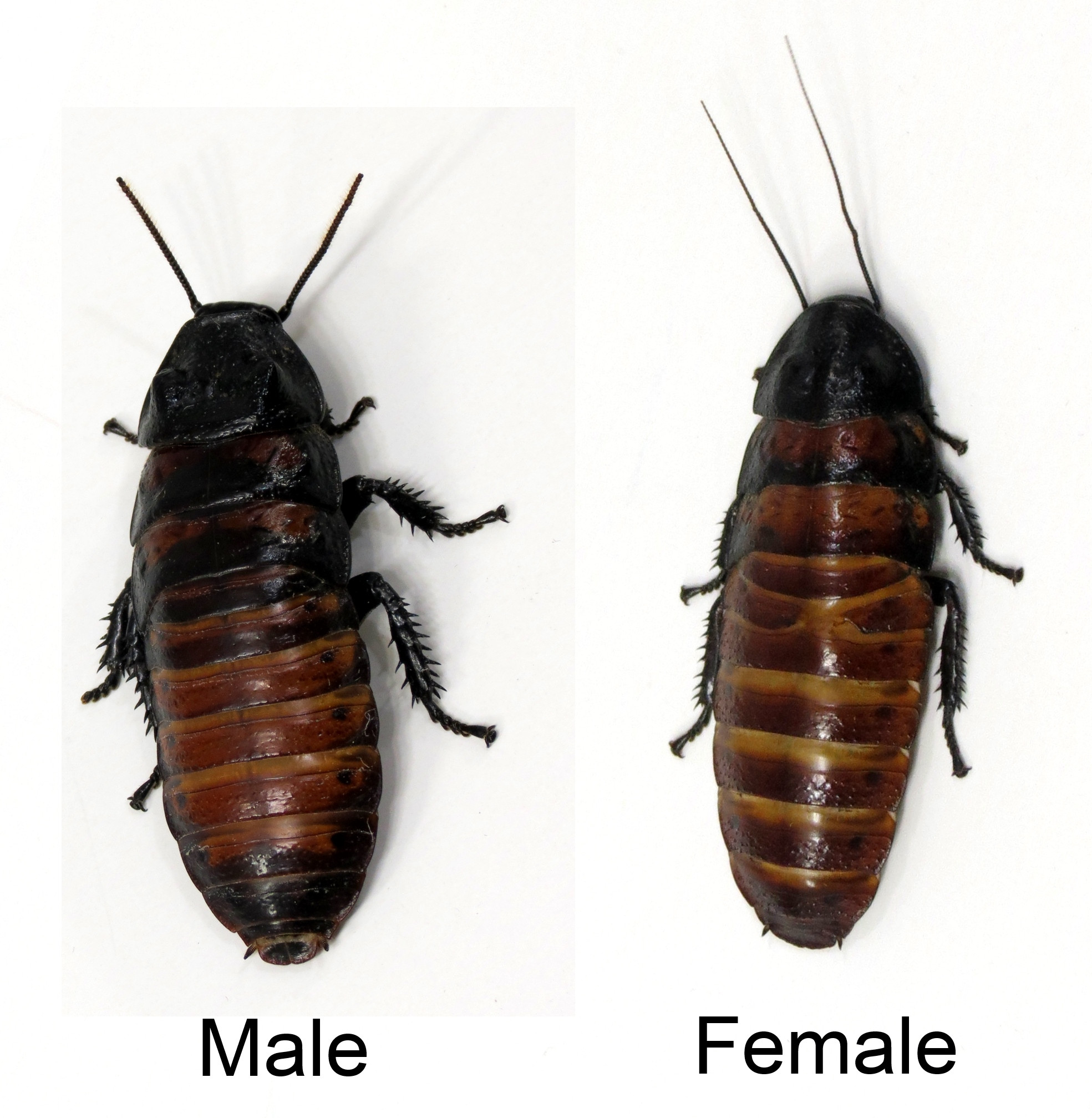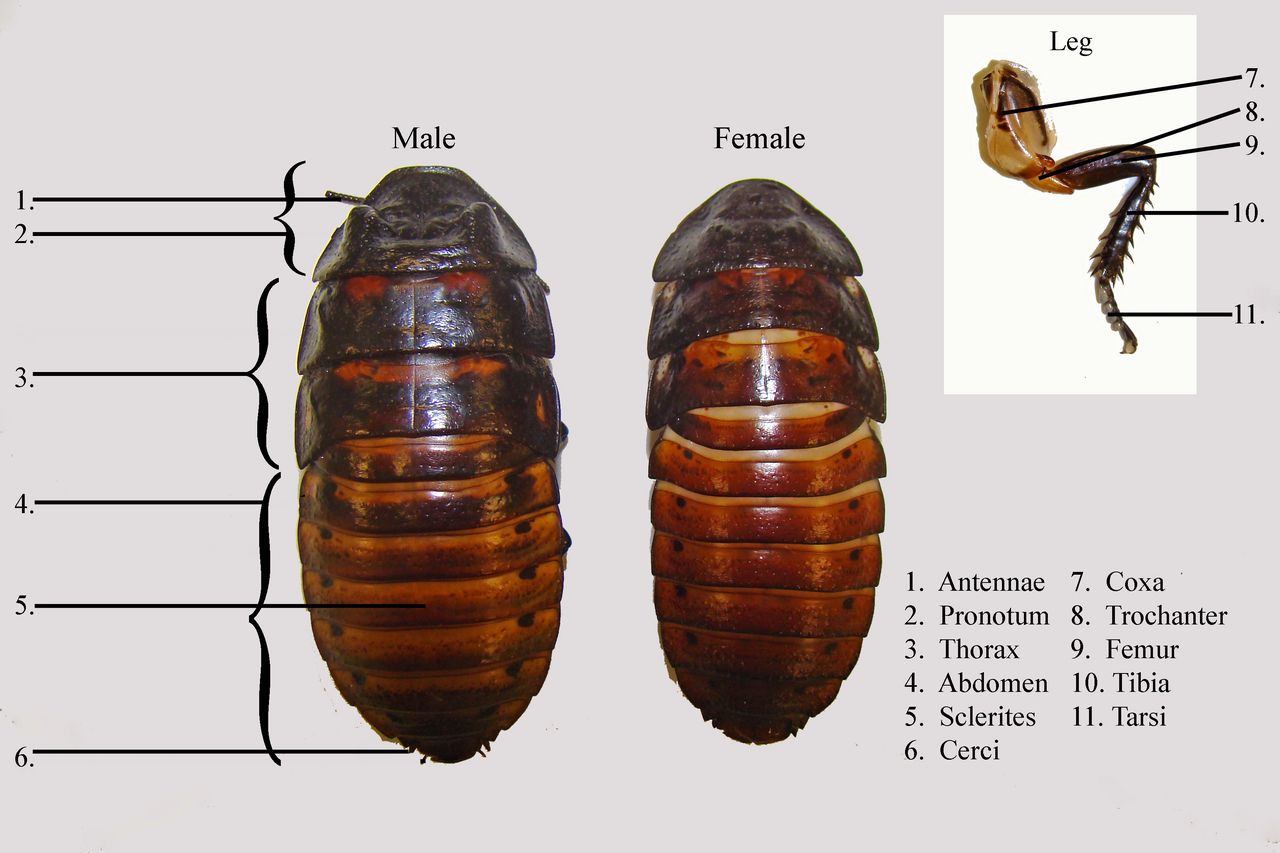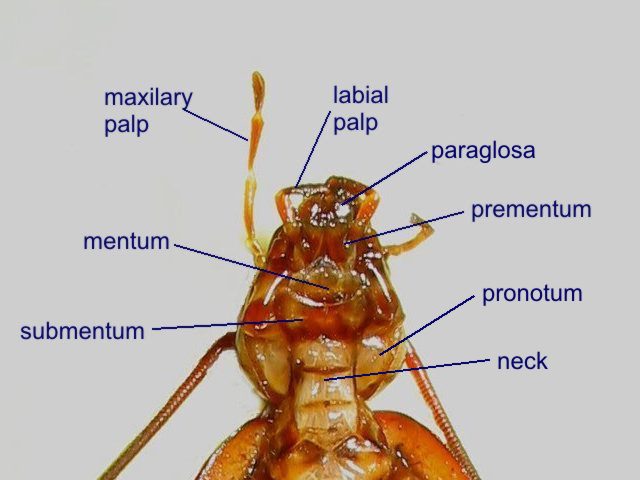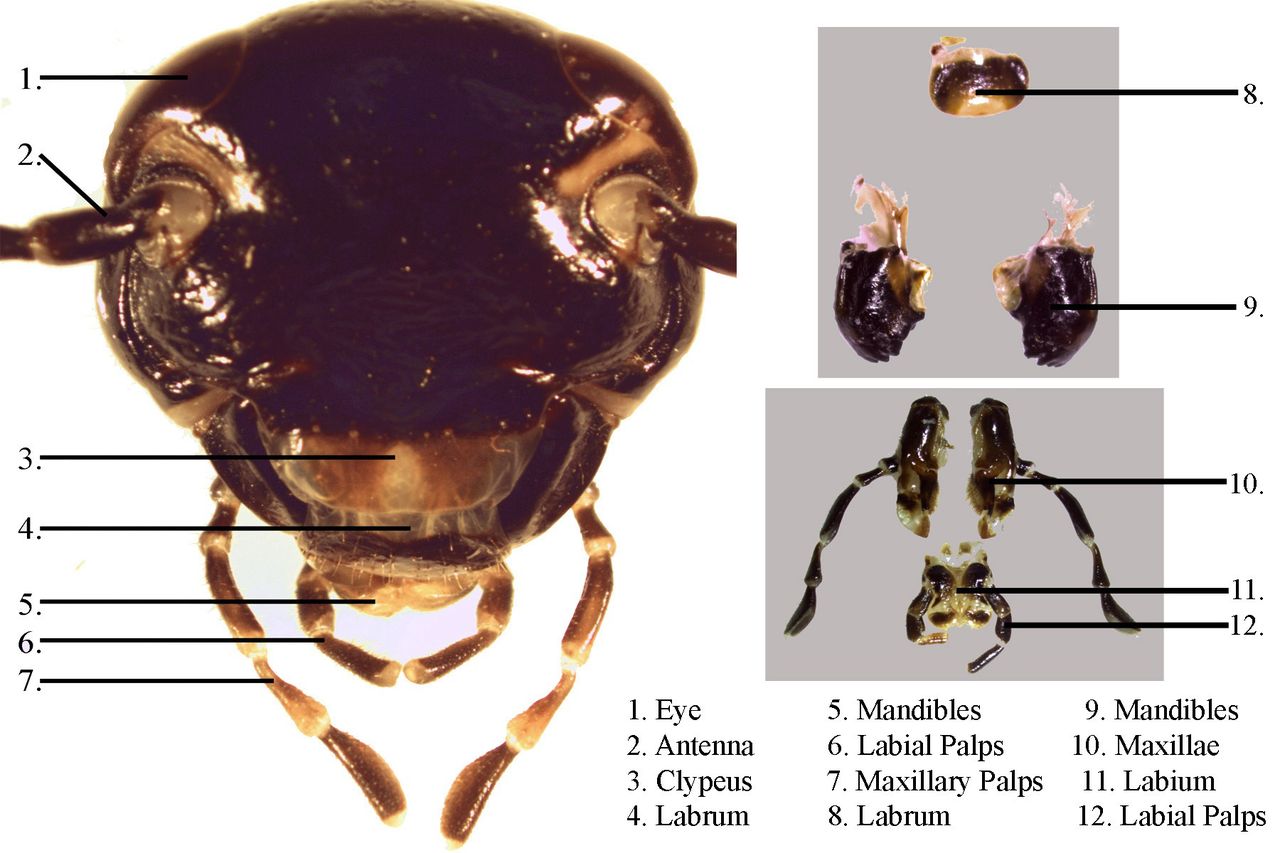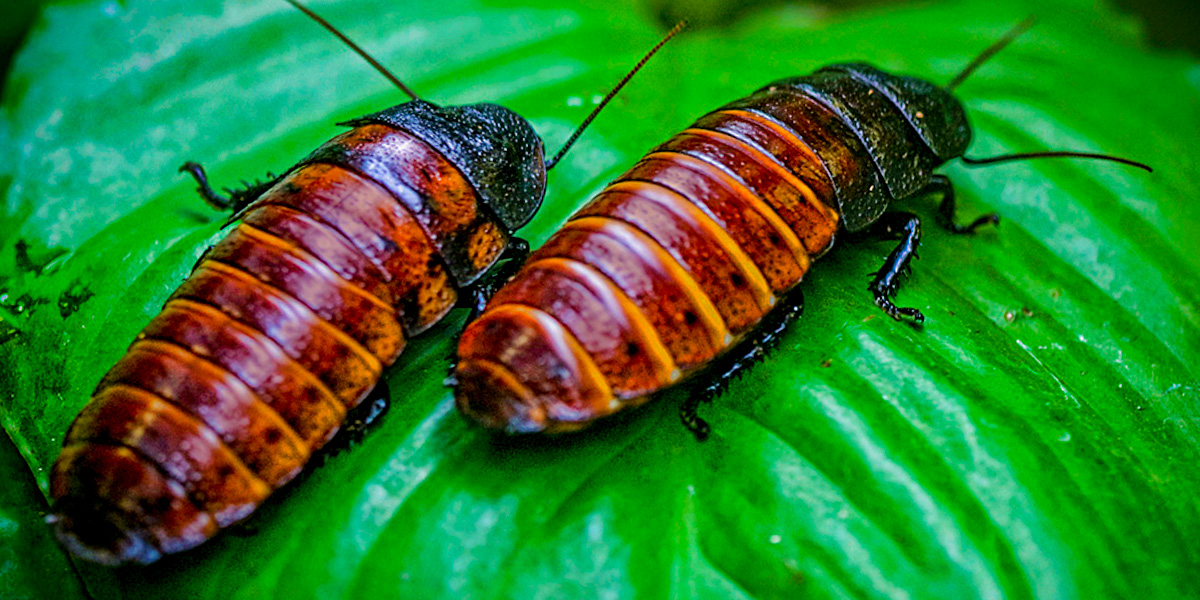
Also known as the hissing cockroach or "hisser," they are one of the larger species of cockroaches, they can reach 2 to 3 inches as adults!
The Madagascar Hissing Cockroach
Gromphadorhina portentosa
The hissing cockroach (Gromphadorhina portentosa), is one of the larger species of cockroaches, reaching up to 2 to 3 inches as adults. They are generally native to the island of Madagascar, which is off the African mainland, where they are known to be found inside of rotting logs. There are some 20 known species of large hissing roaches from Madagascar, many of which are kept as pets and feeders, and usually confused with one another by pet dealers.
Unlike most roaches, these are wingless. They are excellent at climbing and can even climb up smooth glass. Males can usually be distinguished from females by their thicker, hairier antennae and "horns" on the head. Females carry the "eggs" (called ootheca) internally, and release the young nymphs only after her babies have eclosed within her. That means that when they begin to be born inside the mother roach, she will release them as live roaches. In some other wood-inhabiting roaches, the parents and offspring will commonly remain in close physical contact for extended periods of time. In captivity, tthey have been known to live up to 5 years. They feed primarily on vegetable material.
Unlike most roaches, these are wingless. They are excellent at climbing and can even climb up smooth glass. Males can usually be distinguished from females by their thicker, hairier antennae and "horns" on the head. Females carry the "eggs" (called ootheca) internally, and release the young nymphs only after her babies have eclosed within her. That means that when they begin to be born inside the mother roach, she will release them as live roaches. In some other wood-inhabiting roaches, the parents and offspring will commonly remain in close physical contact for extended periods of time. In captivity, tthey have been known to live up to 5 years. They feed primarily on vegetable material.
The Hissing Sounds of the Madagascar Hissing Cockroach
You guessed it! The Madagascar Hissing Cockroach is able to make hissing sounds. They do this by forcing air our of respiratory holes called Spiracles on the 4th segment of their body. However, these holes are found on all of the segments of their abdomen (the section you probably call their butt). The Madagascar hissing roach is one of a few species of roaches that can hiss but they do it differently than most insects. Most will make a hissing sound by rubbing parts of their bodies together or from under where their wings are (the elytra). You'll see this in some long-horned beetle species where they squeeze air from their elytra without the use of spiracles.Hissers are able to make up to 3 different types of hisses. One is when they are disturbed in some way, another is to attract females, and the third is when they are trying to establish dominance and the more submissive males will back down in order to end a dispute.
Check out this article here in the Journal of Experimental Biology: http://jeb.biologists.org/content/216/23/4473
Size & Lifespan
- Lifespan: up to 5 years, but generally 2-3
- Size: Up to 3 inches with good care
Housing
I recommend you line the top two inches of the enclosure walls with a thick layer of petroleum jelly since hissing cockroaches can climb almost anything. This sticky barrier will gross them out and prevent escapes.
- Extra Large Critter Keepers
- 10-gallon glass tanks
- Rubber storage tubs with ventilation holes
- 5 gallon bucket with a well ventilated lid
Heating & Lighting
- Keep Temperatures Between 70 to 85 F
- Special Lighting is not Needed
- Use electric under tank heat pads (like this one)
- If you use a lamp, use the night basking bulbs
Water & Humidity
- High Levels of Humidity
- Mist tank regularly to keep it Humid
Nutrition & Foods
- They will eat just about anything but are mainly Herbivores
- Their Nutrition Value comes from their diet. Feed them healthy foods and they will become healthy feeders
- Dark Leafy Greens, Like romaine, kale, stuff like that. They also love carrots and sweet potatoes, tomatoes, celery, squash, peas, bananas, apples and more!
- Avoid Dogs Foods, Cat Foods, Fish foods
Breeding
- As adults you can tell the males from the females by their horns
- Adults will breed quickly under the right conditions
- Keep temperatures in the mid 80s with high humidity
- Up to 60 babies are hatched internally and born over a 2-day period

